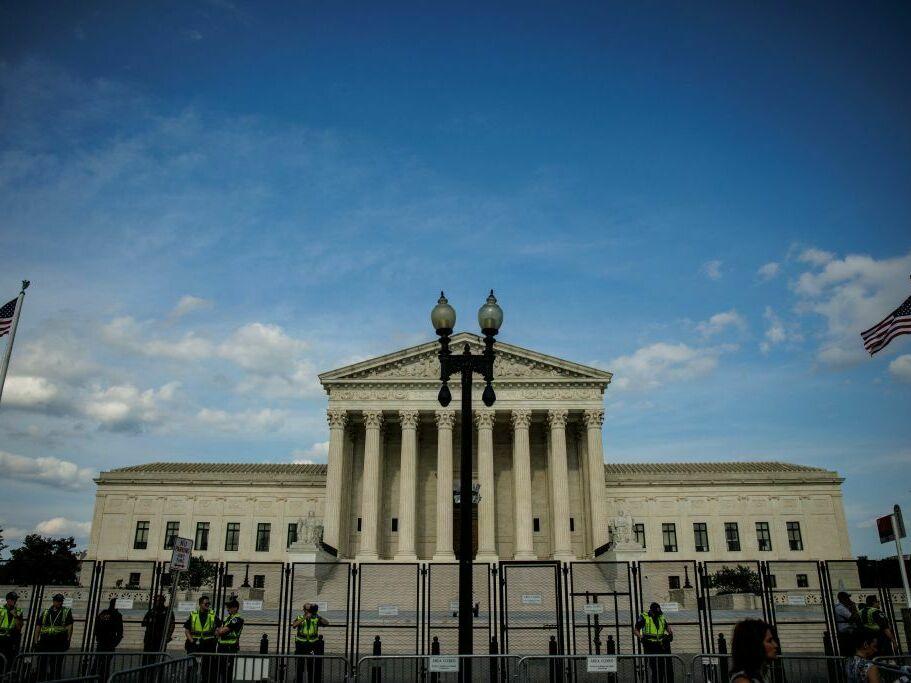Section Branding
Header Content
It's money v. principle in Supreme Court opioid case
Primary Content
The justices of the U.S. Supreme Court sent mixed signals Monday as they struggled to decide whether to give a thumbs up or thumbs down to the multi-billion dollar Purdue Pharma bankruptcy deal--a deal meant to compensate victims of the highly addictive pain killer OxyContin.
Basically, the issue before the court amounts to a battle between money and principle. On the money side is a bankruptcy deal approved by two lower courts that would provide $8 billion to state and local governments in dealing with the consequences of opioid addiction, as well as providing individual compensation to victims. Funding most of that settlement would be the Sackler family, who owned and ran Purdue Pharma, and agreed to pay $6 billion into the compensation pot.
On the principle side are a relatively small number of victims, and the U.S. Trustee, who oversees bankruptcies. They object to the deal because it shields the Sacklers from any further lawsuits, and leaves the family with more than half their wealth, even though they were intimately involved in the aggressive and false marketing of OxyContin.
Representing the bankruptcy trustee and other objectors, Deputy Solicitor General Curtis Gannon said the Sacklers withdrew large amounts of their money from Purdue before the bankruptcy, and he argued that federal law does not authorize bankruptcy judges to approve a release from liability for third parties like the Sacklers.
The government's argument against the deal
That prompted this question from Justice Elena Kagan: "Your position rests on a lot of sort of highfalutin principles of bankruptcy law," she observed, but, she added, "It seems as though the federal government is standing in the way of...a huge huge majority of claimants who have decided that if this provision goes under, they're going to end up with nothing."
Deputy Solicitor General Gannon replied that there is a reason the Sacklers first offered $4 billion, then upped the ante to $6 billion, and he seemed to suggest a yet better deal is possible if the court vetoes the current deal.
Justice Samuel Alito sounded dubious.
"As I understand it," Alito said, "the bankruptcy court, the creditors, Purdue and just about everybody else in this litigation thinks that the Sacklers' funds in spendthrift trusts oversees are unreachable."
That would mean legal costs would eat up most, if not all, of what Sackler money would be recovered.
Justice Brett Kavanaugh followed up, noting that bankruptcy courts have been approving plans like this for 30 years.
"The opioid victims and their families overwhelmingly approve this plan because they think it will ensure prompt payment," he said.
The view from Purdue Pharma and the victims
But Gregory Garre, representing Purdue Pharma, tried to put the kibosh on that argument.
If the court were to block the bankruptcy deal, he said, "billions of dollars that the plan allocates for opioid abatement and compensation will evaporate. Creditors and victims will be left with nothing and lives literally will be lost."
But Kagan raised a verbal eyebrow at that assertion. "I thought that one of the government's stronger arguments is this idea that there is a fundamental bargain in bankruptcy law, which is, you get a discharge when you put all your assets on the table to be divided up by the creditors. And I think everybody thinks that the Sacklers didn't come anywhere close to doing that," she said.
Garre replied that the point of bankruptcy isn't to make life "as difficult as possible" for the Sacklers. It's to maximize compensation and to fairly and equitably distribute the money to the victims.
That point was underlined by lawyer Pratik Shah, representing the victims.
"Every one of the creditor constituencies in this case, comprising individual victims and public entities harmed by Purdue, overwhelmingly support the plan," Shah said.
"Forget a better deal," he told the justices.
"Whatever is available from the Sacklers, whether that's $3 billion, $5 billion, $6 billion, or $10 billion, there are about $40 trillion in estimated claims. And as soon as one plaintiff is successful, that wipes out the recovery for every other victim," Shah warned.
That's why 97% of the victims agreed to release the Sacklers from liability, he said.
Chief Justice John Roberts interjected to note that there are different classes of victims in the case, and some of them want to go forward with holding the Sacklers accountable. Shah replied that in all classes of victims, 96% want to go forward with the plan.
"Currently, there is only one objector standing with the Trustee in this case," he added.
At the end of the day, it was unclear where the majority of the court is going, and whether the bankruptcy plan will survive.
Copyright 2023 NPR. To see more, visit https://www.npr.org.

